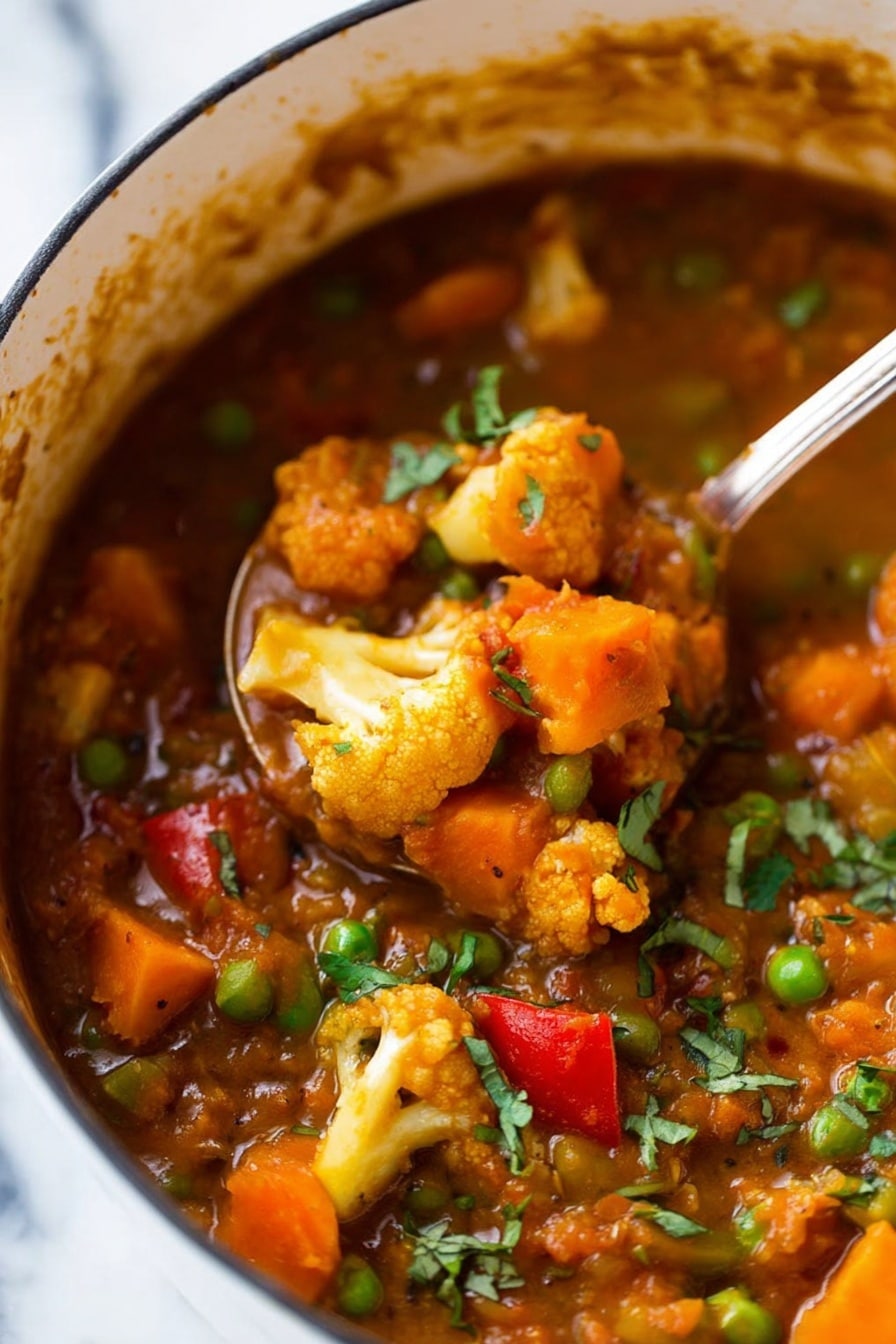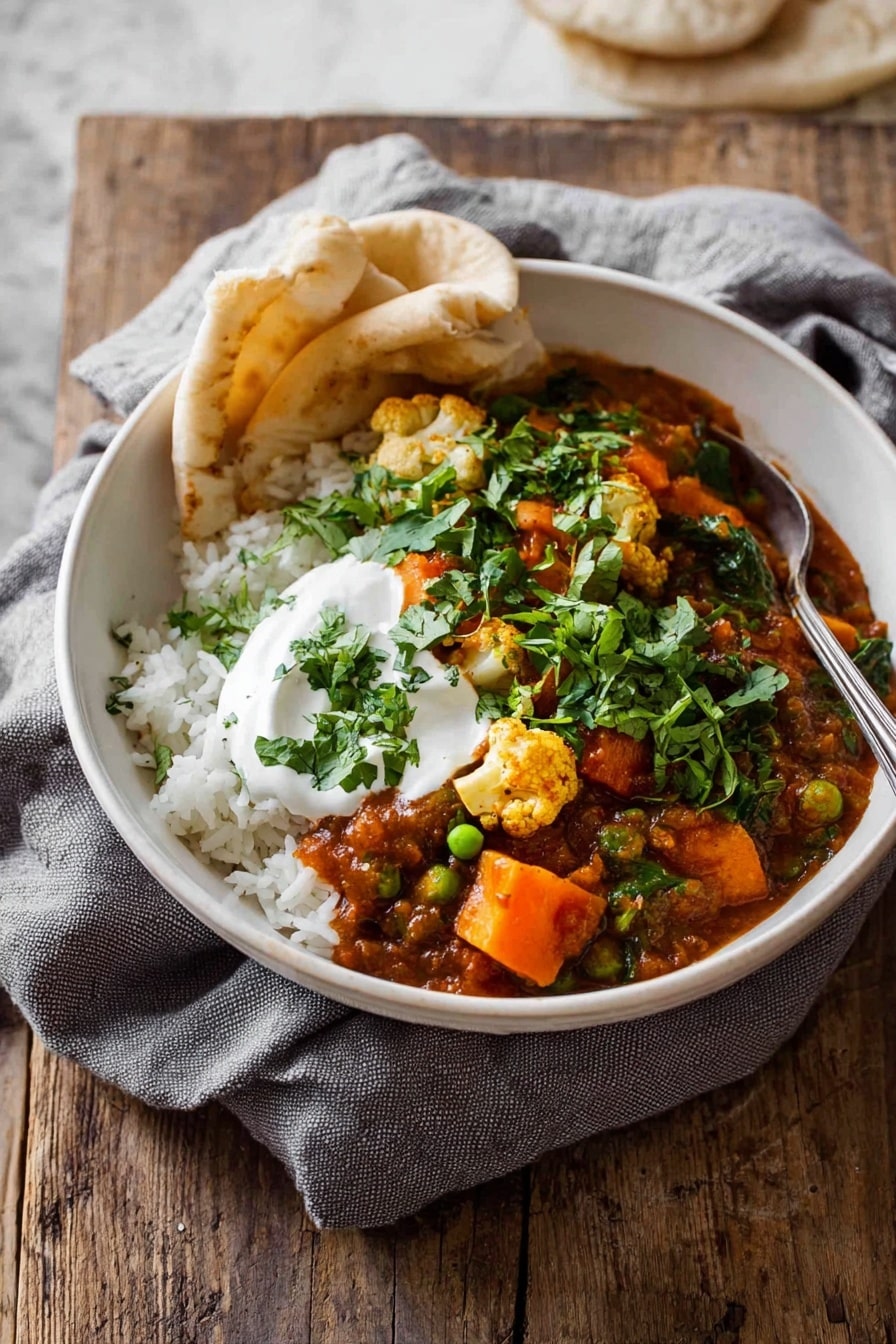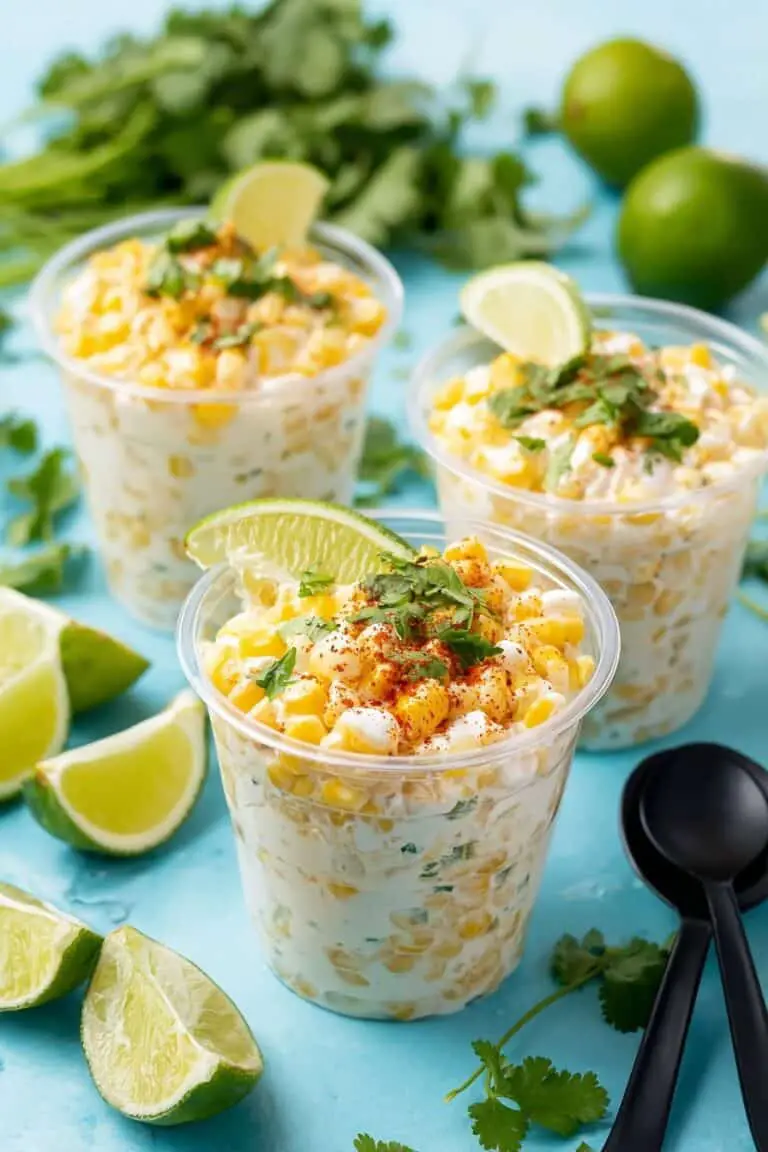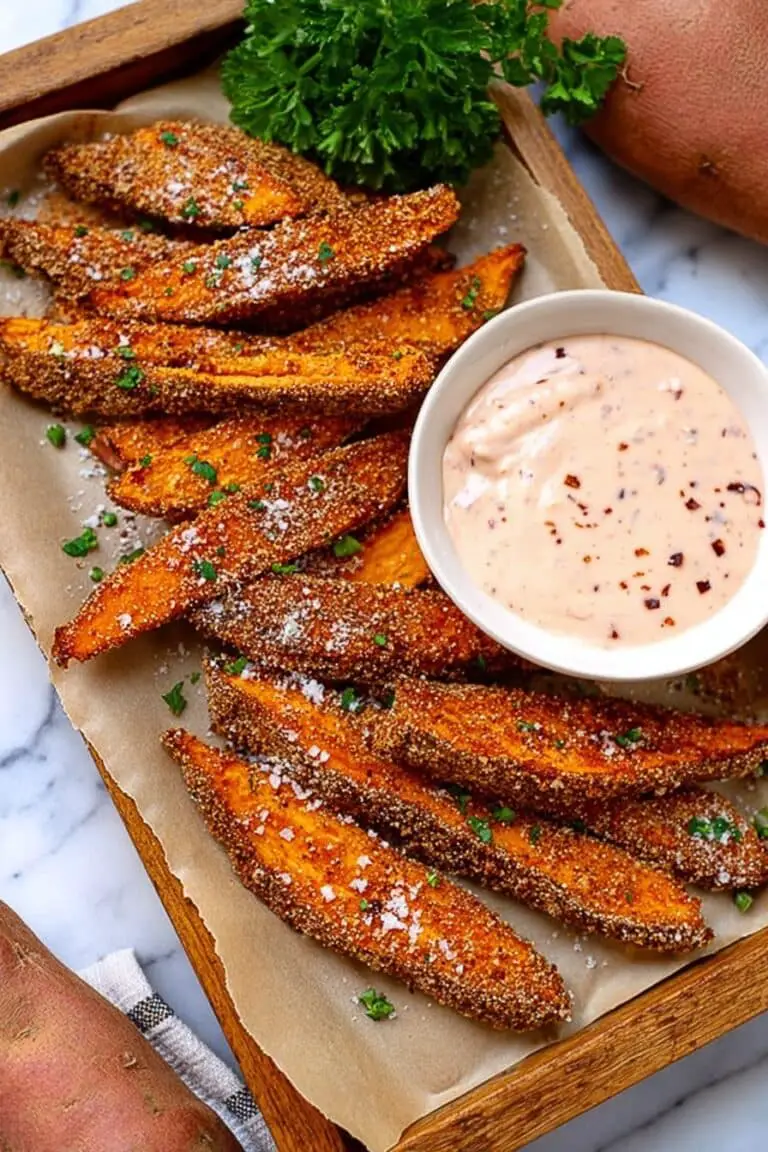If you’re craving something warm, comforting, and packed with flavor, this Vegetable Curry Recipe is exactly what you need. It’s one of those dishes that feels like a big, cozy hug on a plate, and I absolutely love how it brings together a medley of veggies with fragrant spices. Whether you’re cooking for your family or just treating yourself, this recipe is straightforward and absolutely fan-freaking-tastic. Stick with me and I’ll walk you through all my tried-and-true tips to make it turn out just right.
Why You’ll Love This Recipe
- Versatile Ingredients: Uses simple vegetables and pantry spices you likely already have on hand.
- Rich, Creamy Texture: Thanks to cashew cream, this curry feels indulgent without dairy.
- Family-Friendly: You can easily adjust the spice level to suit kids or spice lovers alike.
- One-Pot Wonder: Easy cleanup and can be made in under an hour, perfect for weeknights.
Ingredients You’ll Need
Every ingredient in this vegetable curry plays a key role, balancing the earthiness of the veggies with the bright spices and creamy cashew sauce. I like to shop for fresh, vibrant vegetables and sometimes swap in seasonal produce to keep things interesting.
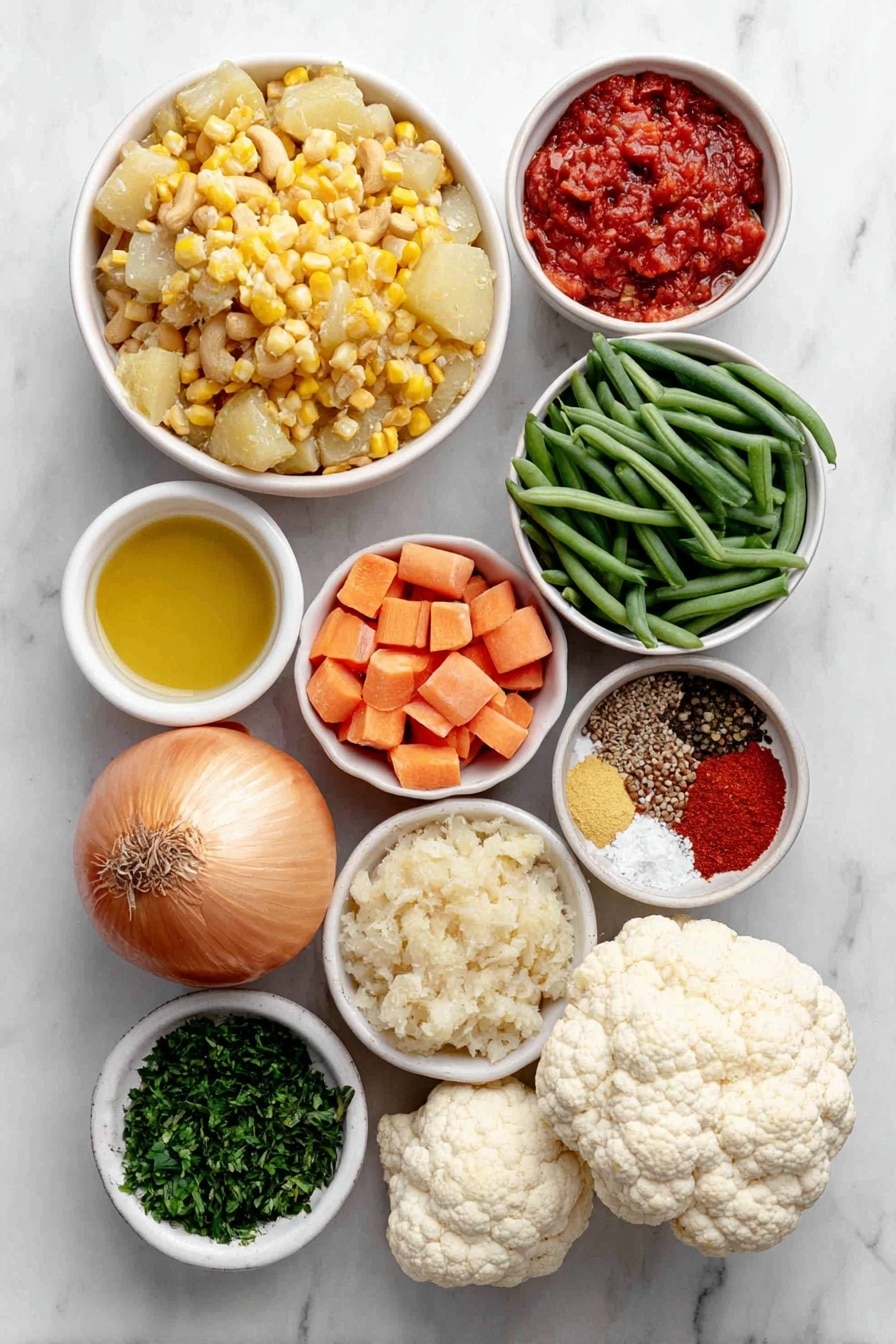
- Oil: I prefer a neutral oil like canola or vegetable, but ghee or coconut oil adds extra flavor.
- Onion: Finely chopped for sweetness and depth—don’t rush sautéing, it builds flavor.
- Green chili: Totally optional, but a slit chili adds a gentle heat; leave it out for kiddos.
- Ginger garlic paste: You can make this fresh or use store-bought; it’s the backbone of the curry’s aroma.
- Pureed tomatoes: Choose mild tomatoes to avoid tanginess; this keeps the curry smooth and rich.
- Coriander leaves: Freshly chopped, they add that perfect herbal freshness when sprinkled on top.
- Kasuri methi: Dried fenugreek leaves bring a subtle, unique flavor—trust me, it’s worth adding!
- Hot water: Used to adjust curry thickness; the amount varies as you cook.
- Cashews: Soaked and pureed for creamy texture without cream; a game changer in vegan curries.
- Carrot: Adds slight sweetness and bite; peel and chop roughly.
- Potatoes: The starchy goodness to make every bite satisfying.
- Green beans: Fresh or French beans work great for crunch and color.
- Peas: I use frozen peas all year round—they add sweetness and pop of color.
- Cauliflower florets: Absorb the curry spices beautifully and bulk up the dish.
- Sweet corn kernels: Optional, but a nice sweet surprise in every spoonful.
- Kashmiri red chili powder: Gives gorgeous color and gentle heat; adjust per your taste.
- Garam masala: The magical spice blend that ties everything together.
- Cumin powder, coriander powder & turmeric: Classic curry spices—use curry powder if you want a shortcut!
- Salt: Essential to balance and enhance all flavors.
- Cumin seeds, cardamoms, cinnamon, bay leaf or curry leaves: Whole spices that infuse incredible aroma during cooking.
Variations
One of the best parts about this vegetable curry recipe is how easy it is to tweak. Over time, I’ve tried several variations that keep this dish fresh and fun, so don’t hesitate to make it your own.
- Dairy-Free Version: I usually skip the cashew cream and substitute with thick coconut milk for a velvety texture—equally delicious!
- Spice Level: I dial up the green chili and chili powder if I want some heat; leave them out if serving young kids or sensitive palates.
- Vegetable Swaps: I’ve swapped cauliflower for broccoli or added bell peppers when in season—just keep the textures similar.
- Protein Boost: Adding chickpeas or tofu turns this into a heartier main that my family loves on busy nights.
How to Make Vegetable Curry Recipe
Step 1: Soak and Prepare Cashew Cream
Before diving into cooking, soak the cashews in half a cup of hot water for about 15 minutes. This softens them so when you blend, you get a luxuriously smooth cream. If you don’t have a small grinder, a high-speed blender works beautifully too. You can add a bit more water if needed to make it silky smooth. This step is a game changer for creaminess without dairy, and I always do it ahead to save time.
Step 2: Build Your Flavor Base
Heat oil in a deep pan and add cumin seeds, cardamoms, cinnamon, and bay leaf. The second these whole spices start crackling and smelling amazing, toss in finely chopped onions. Cook low and slow until the onions turn golden brown; this slow caramelization is key to layering your flavors and I never rush it. Next, add the ginger garlic paste and green chili (if using). Sauté for a minute until fragrant, then pour in the pureed tomatoes. Cook until the oil starts to separate from the tomato mixture—that’s your green light to move on.
Step 3: Spice It Up and Add Your Veggies
Now sprinkle in your ground spices: Kashmiri red chili powder, garam masala, cumin, coriander, turmeric, and salt. Stir everything well to toast the spices and avoid any bitter raw tastes. Then add the chopped carrots, potatoes, green beans, peas, cauliflower, and corn. Give everything a good stir, coating the veggies in the fragrant spice mix. This is where the magic makes your kitchen smell irresistible!
Step 4: Simmer with Cashew Cream and Finish
Pour in the cashew cream, then add hot water as needed to reach your desired curry thickness. Cover the pan and let everything simmer gently for about 20-25 minutes or until the veggies are tender. Stir occasionally to prevent sticking. Towards the end, sprinkle kasuri methi by crushing it between your palms to release its aroma, and finish with fresh coriander leaves. This final flourish brightens the curry beautifully and is a trick I discovered that really elevates home-cooked curries.
Pro Tips for Making Vegetable Curry Recipe
- Caramelize Onions Slowly: Patience here brings out deep sweetness that balances the spices perfectly.
- Adjust Spice to Audience: I always taste as I go to keep it kid-friendly or dial it up for adult palates.
- Soak Cashews Well: This step makes the curry irresistibly creamy—don’t skip or rush it.
- Add Water Gradually: It’s easier to thin the curry than to fix a watery one, so go slow and add only what you need.
How to Serve Vegetable Curry Recipe
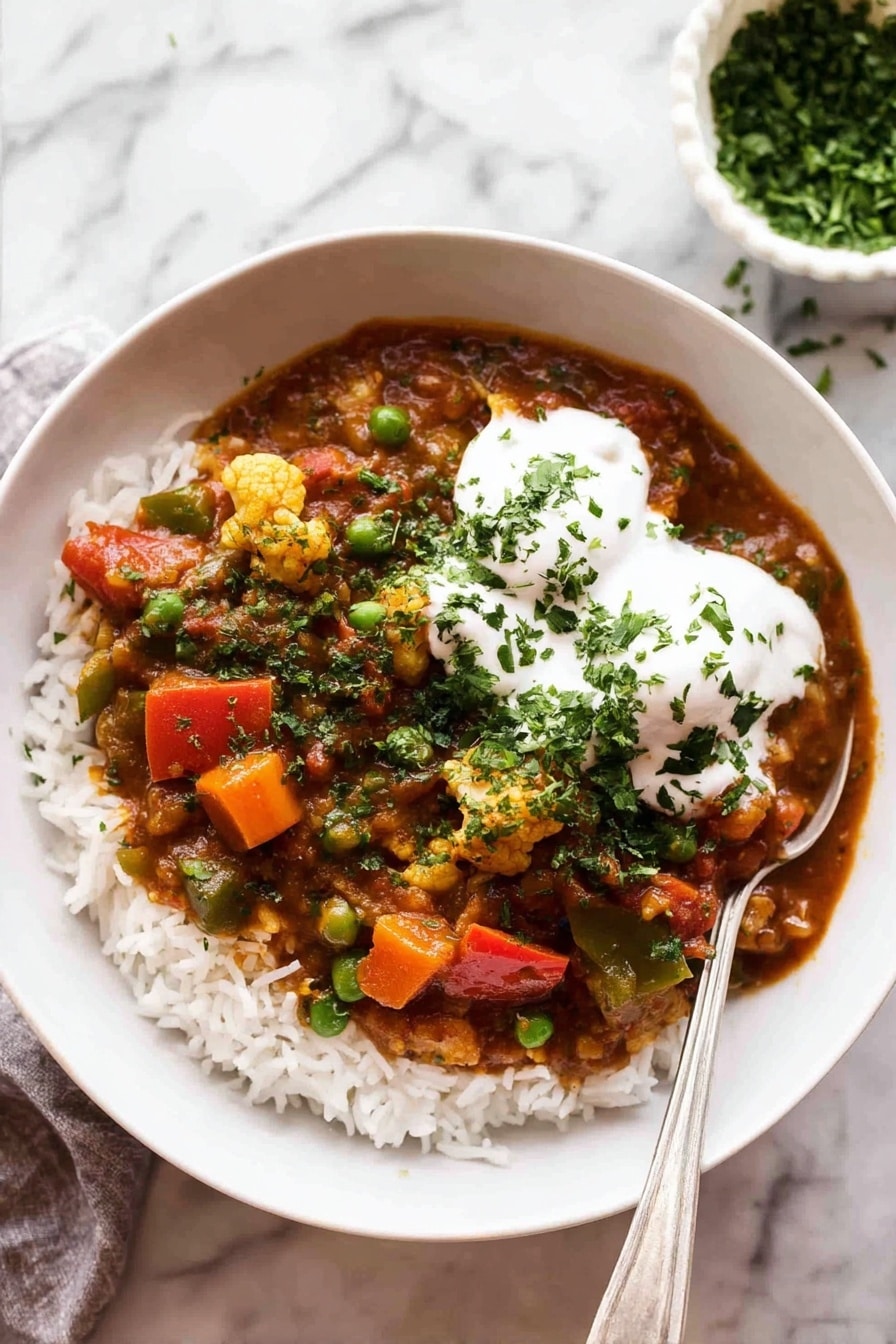
Garnishes
My go-to garnishes for this curry are fresh chopped coriander leaves and a sprinkle of kasuri methi. Sometimes I also add a dollop of yogurt or a squeeze of lemon to brighten things up—freshness really balances the richness for me.
Side Dishes
I like serving this vegetable curry with basmati rice or warm rotis—soft naan bread is another favorite. For a lighter meal, a simple cucumber raita or a fresh salad on the side complements the spices wonderfully.
Creative Ways to Present
For special occasions, I’ve served this curry in mini terracotta bowls nestled in banana leaves, which adds a rustic charm—perfect for dinner parties. Also, topping with toasted nuts or seeds adds unexpected crunch and looks gorgeous on the plate.
Make Ahead and Storage
Storing Leftovers
I usually transfer leftovers to airtight containers and refrigerate for up to 3 days. The flavors actually deepen overnight, and I always find the curry tastes even better the next day.
Freezing
Freezing works well if you want to meal prep. Just cool the curry completely, then portion it into freezer-safe containers. It’ll keep nicely for up to 2 months. When thawed, sometimes the sauce thickens, so just add a splash of water while reheating.
Reheating
I reheat leftovers gently on the stove over medium-low heat, stirring occasionally. This helps maintain the creamy consistency without curdling, and I add a bit more water if it looks too thick. Microwave works in a pinch, but slow stovetop warming is my favorite.
FAQs
-
Can I make this Vegetable Curry Recipe vegan?
Absolutely! This recipe is naturally vegan as long as you skip any dairy additions like yogurt. The cashew cream provides richness without any animal products.
-
What can I substitute for cashews if I have a nut allergy?
If you’re allergic to nuts, coconut milk is a fantastic alternative that still gives the curry a creamy texture. Use thick coconut milk and adjust water accordingly.
-
Can I use frozen vegetables instead of fresh?
Yes! Frozen veggies like peas and cauliflower work very well and can be convenient. Just adjust cooking time since frozen vegetables typically cook faster.
-
How spicy is this vegetable curry?
The spice level is mild to medium by default, thanks to Kashmiri chili powder which adds color more than heat. You can easily customize by adding more green chili or chili powder if you like it hotter.
-
What should I serve with vegetable curry?
I love pairing it with basmati rice, naan, or roti. Side dishes like cucumber raita or a fresh salad complement its warmth beautifully.
Final Thoughts
This vegetable curry recipe has become a staple in my kitchen, partly because it’s so adaptable and partly because it just hits all the notes—comforting, flavorful, and full of wholesome goodness. When I first tried it, I was amazed at how creamy and satisfying a vegan curry can be with just cashews and simple spices. I really hope you’ll give this a try; once you make it, I think you’ll agree it’s one of those dishes you want on repeat. So grab your spices and veggies, and let’s get cooking!
Print
Vegetable Curry Recipe
- Prep Time: 15 minutes
- Cook Time: 25 minutes
- Total Time: 40 minutes
- Yield: 4 to 5 servings
- Category: Main Course
- Method: Stovetop
- Cuisine: Indian
- Diet: Vegetarian
Description
A simple and flavorful Indian-style vegetable curry made with a medley of fresh vegetables, aromatic spices, and a creamy cashew base. This versatile dish is easy to prepare and perfect for serving with rice, roti, naan, or bread.
Ingredients
Spices and Seasonings
- ½ teaspoon cumin seeds (+ 3 cardamoms + 1 inch cinnamon + 1 bay leaf or 1 sprig curry leaves)
- ¾ to 1¼ teaspoon Kashmiri red chili powder (adjust to taste, leave out for kids)
- 1 teaspoon garam masala
- 1 teaspoon cumin powder (omit to use curry powder)
- 1 to 1½ teaspoon coriander powder (omit to use curry powder)
- ⅛ teaspoon turmeric (omit to use curry powder)
- 1 teaspoon salt (adjust to taste)
- 1 tablespoon kasuri methi (optional, dried fenugreek)
Aromatics
- 1 cup (1 large) onion (very finely chopped)
- 1 green chili (slit or chopped, optional, leave out for kids)
- 1 tablespoon ginger garlic paste (or 1 tablespoon each grated or crushed)
- 1 cup (3 medium) pureed tomatoes (or finely chopped, avoid tangy tomatoes)
Vegetables
- ¾ to 1 cup carrot (peeled, chopped, 1 medium)
- ¾ to 1 cup potatoes (peeled, chopped, 1 medium)
- ½ cup green beans (chopped or French beans)
- ½ to ¾ cup fresh or frozen peas
- 1½ cups cauliflower florets (substitute with peas, potatoes & carrots)
- ¼ cup sweet corn kernels (optional)
Other
- 2 to 3 tablespoons oil
- 20 cashews (or ½ cup thick coconut milk or 1½ tablespoon nut butter, read notes)
- 1¼ to 2 cups hot water (use as required)
- 2 to 4 tablespoons coriander leaves (chopped to garnish)
Instructions
- Prepare cashew cream: Soak the whole cashews in half a cup of hot water for 15 minutes. Then, grind them with the soaked water in a small grinder until smooth and creamy. Add more water if needed to achieve a smooth puree. (Omit this step if using coconut milk.)
- Heat spices: In a pan, warm 2 to 3 tablespoons of oil. Add cumin seeds, cardamoms, cinnamon, bay leaf or curry leaves, and let them sizzle to release their aroma.
- Sauté aromatics: Add the finely chopped onion and sauté until translucent and browned. Then add the green chili (if using) and ginger garlic paste; cook for a few minutes until the raw smell disappears.
- Add tomatoes and spices: Stir in the pureed tomatoes and cook until oil separates from the mixture. Then, add Kashmiri red chili powder, garam masala, cumin powder, coriander powder, turmeric, and salt. Cook the spice mixture well to develop rich flavors.
- Add vegetables: Add chopped carrots, potatoes, green beans, peas, cauliflower florets, and sweet corn (if using). Stir to coat the vegetables with the spice mixture.
- Add cashew cream and water: Pour in the prepared cashew cream and add hot water (1¼ to 2 cups) as needed to create a smooth curry consistency. Mix well and bring the curry to a gentle boil.
- Simmer the curry: Reduce heat, cover, and let the curry simmer for about 20-25 minutes or until the vegetables are tender and cooked through.
- Finish and garnish: Sprinkle kasuri methi (if using) and freshly chopped coriander leaves on top. Stir gently and cook uncovered for another 2 minutes.
- Serve: Serve the vegetable curry hot with rice, roti, naan, or bread as preferred.
Notes
- This vegetable curry uses cashew cream to provide a creamy texture; alternatively, thick coconut milk or nut butter can be used for variation.
- Adjust the green chili and Kashmiri red chili powder according to your spice preference or omit for children.
- Feel free to substitute the vegetables based on availability; peas, potatoes, and carrots work well as alternatives to cauliflower.
- Serve this curry with Indian breads such as roti or naan, or with steamed rice for a complete meal.
- For a richer flavor, frying spices whole in oil at the beginning helps release their essential oils.
Nutrition
- Serving Size: 1 serving
- Calories: 179 kcal
- Sugar: 10 g
- Sodium: 711 mg
- Fat: 8 g
- Saturated Fat: 1 g
- Unsaturated Fat: 7 g
- Trans Fat: 0.03 g
- Carbohydrates: 24 g
- Fiber: 6 g
- Protein: 5 g
- Cholesterol: 0 mg

